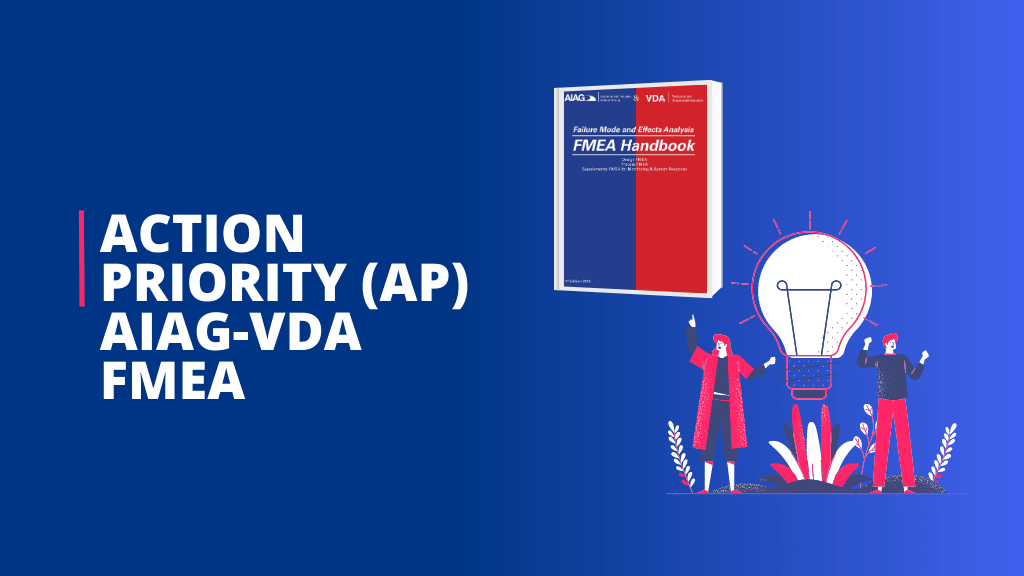As FMEA is risk assessment tool and aim to reduce the risk in our design and process. Therefore this articles specifically discuss about how you can exactly Reduce the Risk in FMEA.
Hope you all have gone through detailed Design FMEA and Process FMEA articles to understand the deeper concept of how to create FMEA’s.
What is Risk in FMEA?
FMEA tool is more focus on the concept of risk analysis and assessment. When we design our product and make the same product through manufacturing processes.
To achieved the good quality and reliable product, there should not be the failures in your product design and processes.
If there is a failures in your product it means there is a high chance of product fail in terms of fit, function and use case. This is nothing but the risk in our product.

And FMEA tool is help us to identify those potential risks in early stage of development in product design and manufacturing process.
Risk in FMEA is the combination of severity, Occurrence and Detection. This will give you the Risk category in terms of Action Priority. Before it was Risk Priority Number (RPN) method.
How to identify the risk in FMEA?
You have given the severity, occurrence and detection ratings to the specific failure mode and failure cause. You can have a look on the detail article how to give FMEA ratings effectively? To understand the concept and rating criteria.
Old standard method (RPN method)
The formula to calculate the risk in the FMEA is multiplication of severity, occurrence & detection. Then usually you will get one RPN number.

Based on the threshold criteria, risk is prioritized. Below some examples for your reference.
- Some companies are follow the RPN above 100 is risk.
- For severity 9 & 10, RPN above 40 is risk.
- Severity X occurrence (SXO) above 36 is the risk.
Many OEMs have their own threshold criteria. You must check their manuals to follow OEM specific criteria to identify the risk in FMEA.
New AIAG-VDA action Priority Method to identify the risk.
To avoid this confusion of following different criteria for different OEM’s, New AIAG-VDA 1st edition 2019 standard is been released.
Now we have the method of action priority. The risk is now identify based on three categories.
- Low(L)
- Medium(M)
- High(H)

You can see in below table your respective severity, occurrence and detection number and you will get the exact risk of the failures in FMEA.

The detailed guide is available for the action priority.
How to reduce the risk in FMEA?
The ultimate aim of FMEA is to identify and reduce the risk of failure in our product design and manufacturing processes.
The risk is now reduce in three ways.
- Reduction in Occurrence of failure (Reduce Occurrence Number)
- Increase the failure detection (Reduce Detection Number)
- Reduction in Severity (Reduce Severity Number)
Let’s see how exactly we can reduce the risk using above ways.
How to Reduce the Occurrence of Failure / reduce the occurrence rating?
The occurrence rating is associated to the past failure data and how strong your current prevention action to prevent the cause.
The past failure data can be from Rejection failure data (Inhouse, customer claim), Field failure data (Warranty Failure). The occurrence rating only given to cause of failure not to the failure mode.
To reduce the occurrence rating you must identify the strong prevention controls. Such as Poka-yoke, error proofing, also automatic controls can be added. Design or process change proposals also helps in reducing the occurrence of failure.
These additional strong prevention controls help to reduce the occurrence of failure cause in the future. And therefore the occurrence rating can be reduced.
How to increase Detection / reduce the detection rating?
The detection rating is associated to the current detection action to detect the failure mode or failure cause.
Now if you have the risk in your FMEA and to reduce the risk you have option to reduce the detection rating. The only way to reduce the detection rating by adding strong detection control.
For example of you have visual control in your current detection action. Then it’s not a strong detection. You can use some automated controls to detect the failures. Such as Gage measurement, Camera inspection, Sensors, use of instrument to measure the specification, SPC / capability analysis.
How to reduce severity in FMEA?
The severity is associated to the failure effect. And the failure effect is the consequences of the failure mode.
The aim of this step is to reduce the severity rating
Can we change severity in FMEA?
But it is not possible to change the failure effect therefore the severity of the FMEA cannot be changed.
Now still you may have the question, how to reduce the severity in FMEA.
Severity Reduction in a Design FMEA
The severity in the Design FMEA is only change when there is change in design. But you cannot say that you changed the severity.
There is a chance of change in the failure mode and failure effect. It will lead to new severity for new design concept.
When you change the design it means the analysis won’t be continue with previous failure. You need to identify again the failure mode and their effect for new design. And there is chance of less impact of failure for new design and will lead to have low severity than old design.
In this way you can think on reducing the severity rating.
Many cases it will be difficult to change the design or processes. Therefore it’s better to focus on increasing prevention and detection controls.
Summary
The risk in the FMEA is the combination of Severity, Occurrence and Detection rating of the respective failure. The risks are then categorized to take appropriate action on important risk to reduce the impact.
Then the risk in FMEA is reduced by increasing the prevention and detection controls. Also some cases new design or process implemented to have a reduce impact and possibility to have new severity rating.

I am a full time Engineer and Quality Professional with over 11+ years of experience in the automotive industry. My professional journey has started from a small enterprise quality inspector to a advanced quality expert. I am creating a good-quality content for engineers. Help them to grow in their career.Learn more here.






